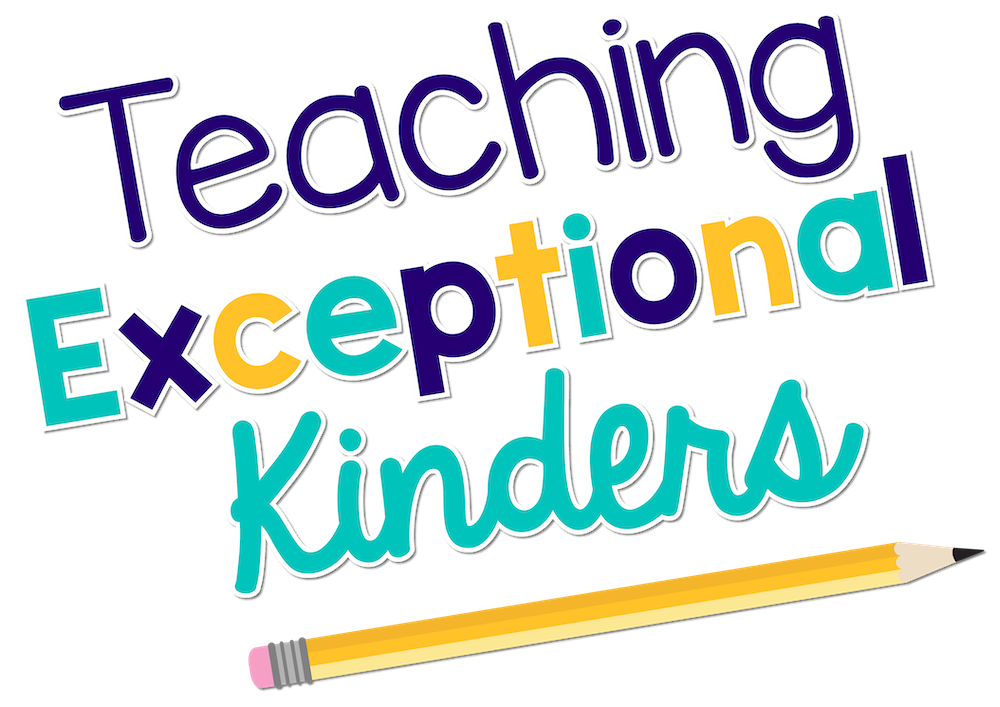Tips for Supporting English Language Learners in Kindergarten
Have you ever welcomed a new student into your classroom who doesn’t speak or understand English? This can be a very common occurrence in the kindergarten classroom! I have taught in classrooms with up to six home languages represented at once, so I know how challenging this situation can be for both the student and the teacher. In this post, I’m going to share some of my best tips for supporting English language learners in kindergarten.
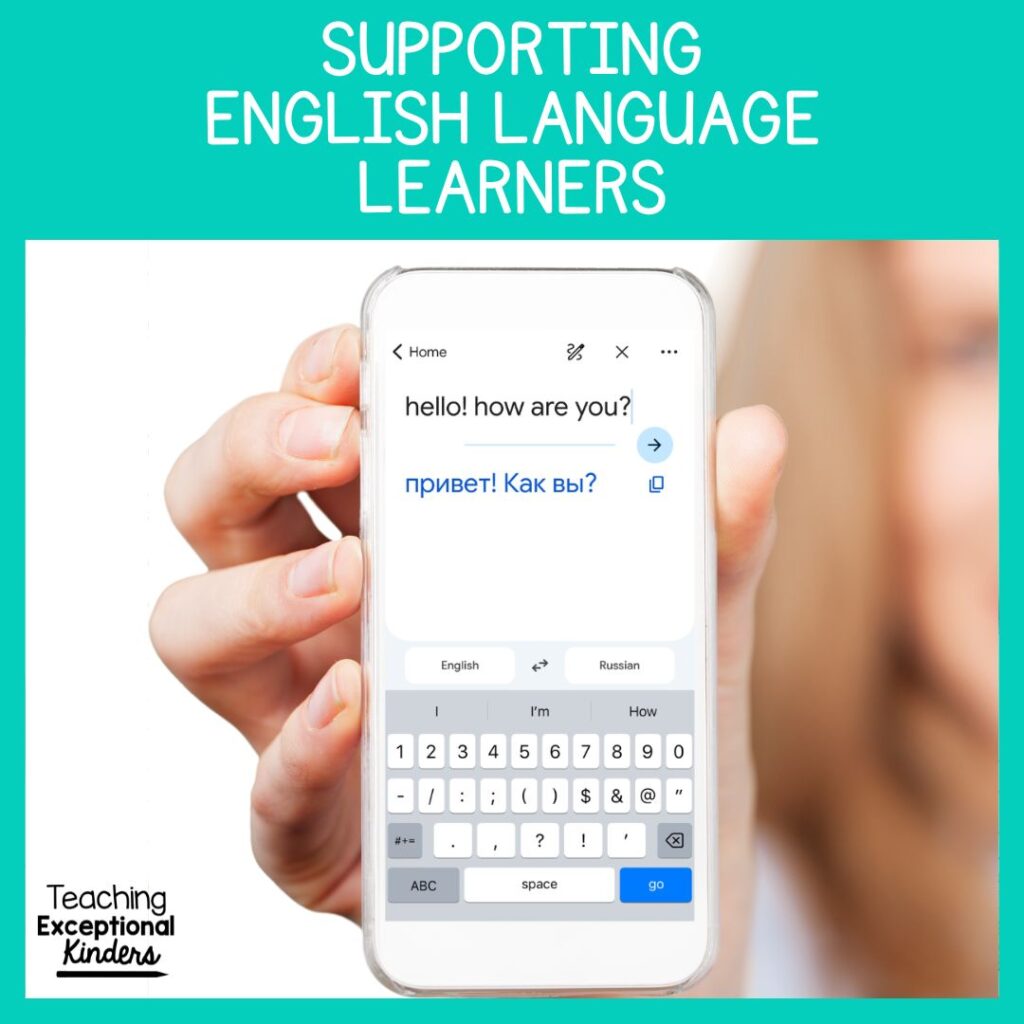
English Language Learners in Kindergarten
Kindergarten is a very unique setting when it comes to supporting English language learners. Since this is the first year in a school setting for many children, it’s very common for kindergarten students to enroll in school knowing only their home language. This means that kindergarten classrooms have a high number of students who speak no English.

On the other hand, kindergarten is one of the best grade levels for students to learn English without feeling isolated or singled out. This is because all of the students are learning the basics of English, regardless of the language they speak at home. As an entire class, students are learning about letters and sounds, sentence structure, vocabulary, and more!
So if you have a new student in your classroom who doesn’t speak English, the first step is to take a deep breath! Many of the supports you already have in place for your kindergarteners will be helpful for your new student. With just a few additional tools, you can make sure that your student feels welcome and supported.
3 Tips for Supporting English Language Learners
1. Keep Your Cell Phone Handy
If you have a student in your classroom who knows very little English, your cell phone will become a very important tool! If you’re giving an instruction that seems to be confusing to your student, just open up the Google Translate app!
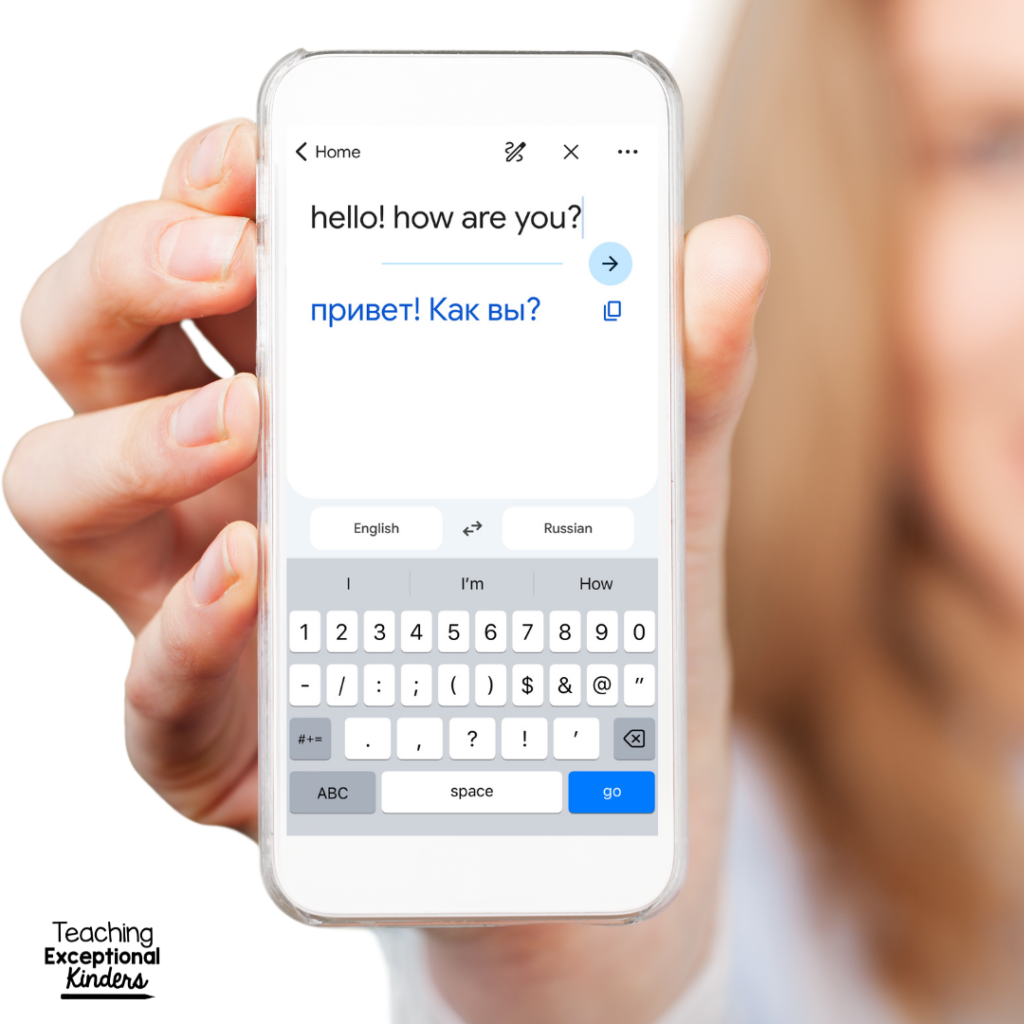
You can quickly speak the instructions into your phone and they will be instantly translated. You might see the photo above and think: “Well, that’s great for students who can read. What about kindergarten students?” Don’t worry! There is an option to have the translated text read out loud in the student’s home language.
Don’t be surprised to see your student chuckle or look a little bit puzzled when using Google Translate. The translations can sometimes be a little bit formal sounding or include words that don’t match the student’s regional dialect. However, Google Translate can still help to bridge the gap as your student is learning the vocabulary related to the daily routine.
2. Maintain Equitable Communication with Parents
Another way to help your students feel more comfortable and at home in your classroom is to make sure their parents are kept in the loop. They should be receiving the same frequency of reminders and updates (in their home language) as all of the other families in the classroom.
I’ve shared before about how simple it can be to maintain regular communication with the families of kindergarten students: A sentence written in a communication folder; a glow note sent home at the end of the day; a quick phone call home. However, these informal parent contact methods can make it more likely that we aren’t communicating equally with the families of our English language learners. This is especially true if your school has a large number of different home languages represented in each classroom.
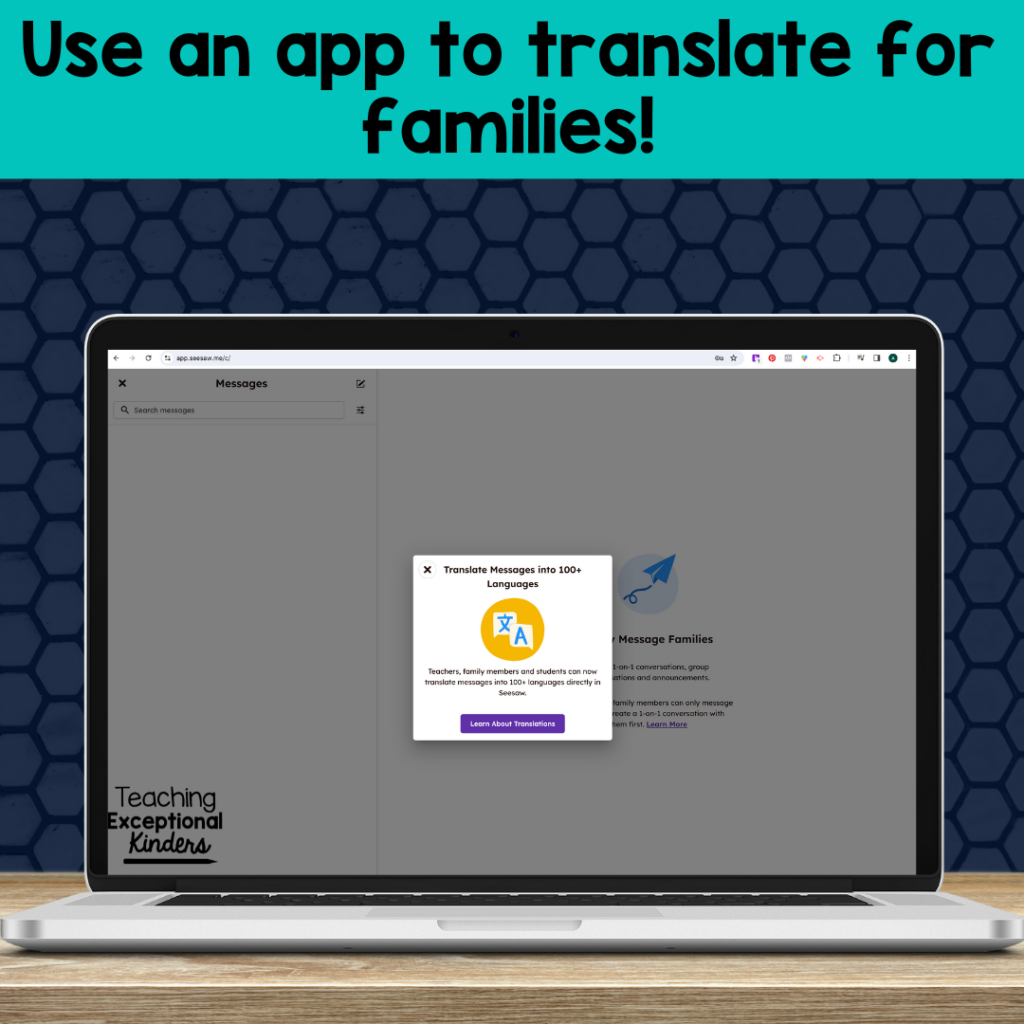
The good news is that there are many tools that we can use to maintain equitable communication with parents! My school district paid for Seesaw, a parent communication app that could translate messages, comments, and announcements for families. Google Translate is embedded within the app, so parents have the option to translate whenever something is posted in a language that differs from the default language of their device.
3. Use Classroom Visuals
This final tip shouldn’t come as a surprise if you’ve read my blog before. Classroom visuals are an absolute non-negotiable for English learners. There are so many ways that you can incorporate visual supports to help your students who don’t speak English.
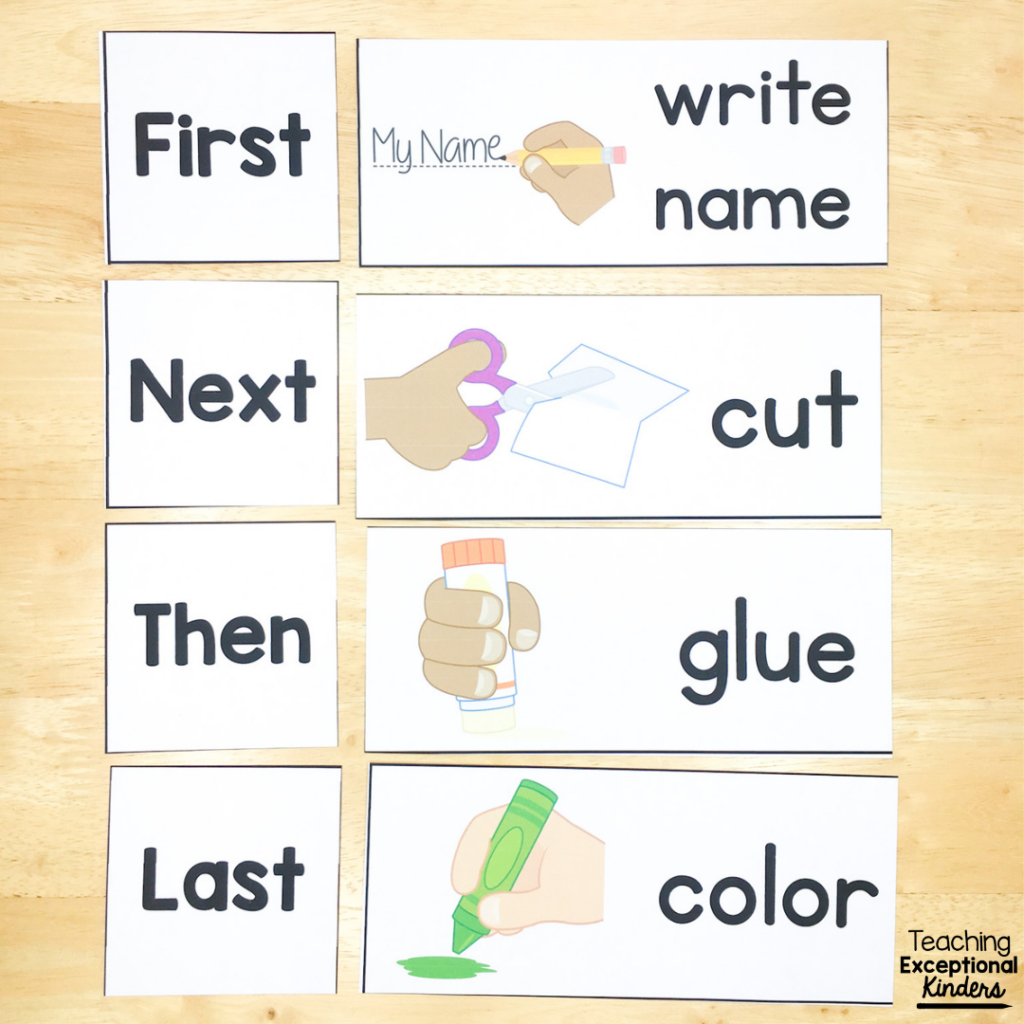
- Process Verbal Directions: When you’re giving directions about how to complete an assignment, chances are that your English language learner is hearing the Charlie Brown teacher voice. Using visual supports, like these picture direction cards, can help students understand more of what you’re asking them to do. This is true for all students in your classroom!
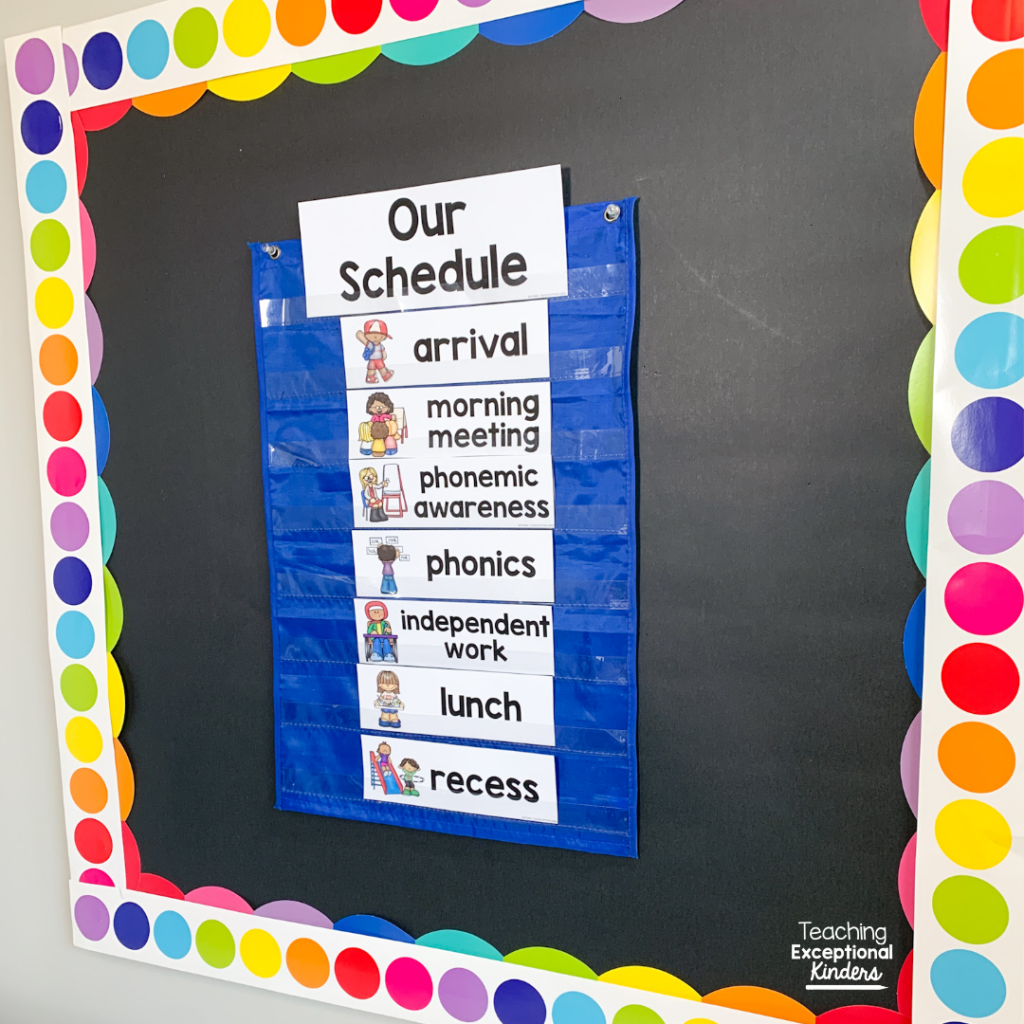
- Reduce Anxiety: Think of how difficult it must be to navigate a classroom where you don’t understand what’s being said by the staff and students around you. You can help reduce some of this anxiety by using a picture schedule. Your students can see what’s coming next, even if they don’t understand the words you’re using to describe the schedule.
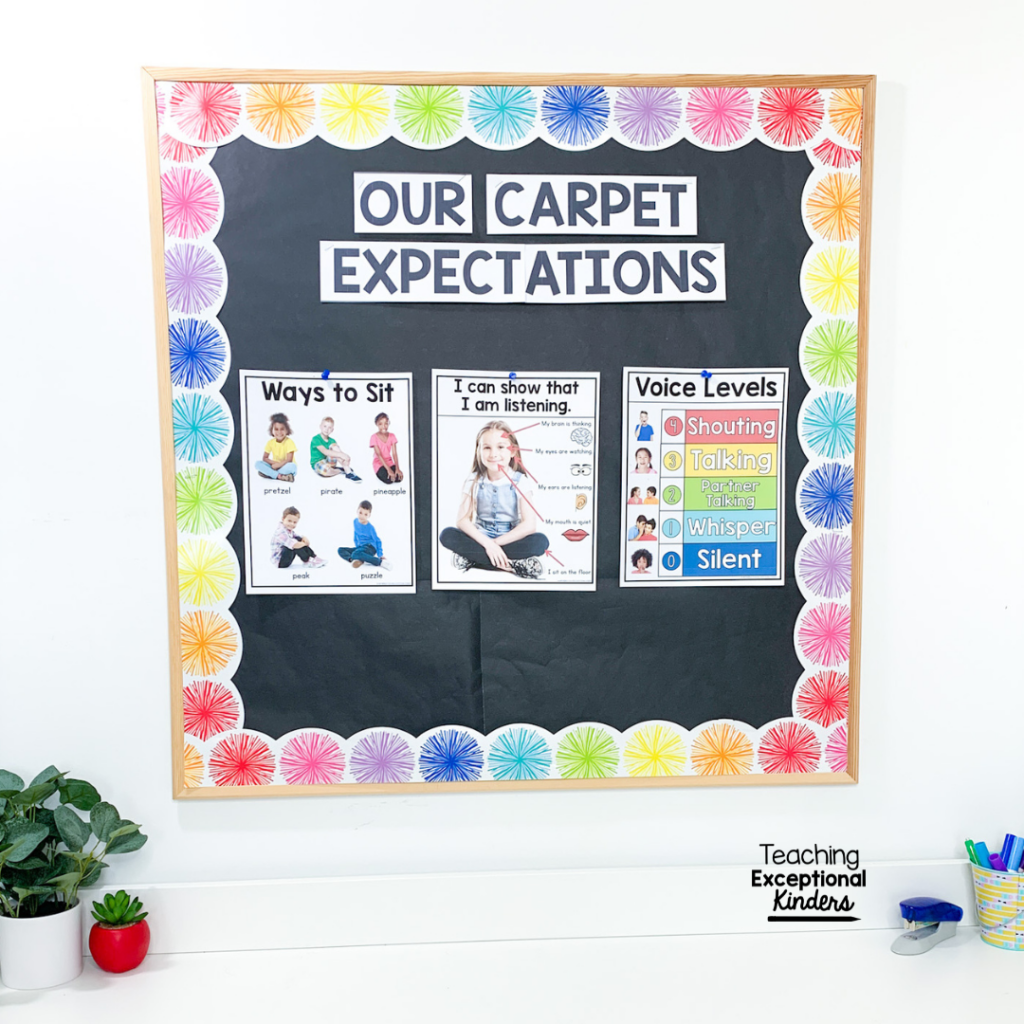
- Limit Verbal Directions: Finally, classroom visuals can limit the amount of spoken language you’re using to give directions and reminders. For example, if you need a student to sit more appropriately at carpet time, you can point to your carpet expectation visuals instead of trying to verbalize the redirection. This is great for your overall classroom management, as well!
Printable Classroom Visuals for Kindergarten
Would you like to add to the visuals that you’re using in your kindergarten classroom? I have put together a bundle of classroom visual supports that will save you a lot of time and money. This bundle includes all of the visuals you’ll need to set your students up for success. You’ll find visual schedules, picture direction cards, carpet time visuals, and more!
You can find this resource in the Teaching Exceptional Kinders shop or on TPT if you’d like to take a closer look at everything included in the bundle.
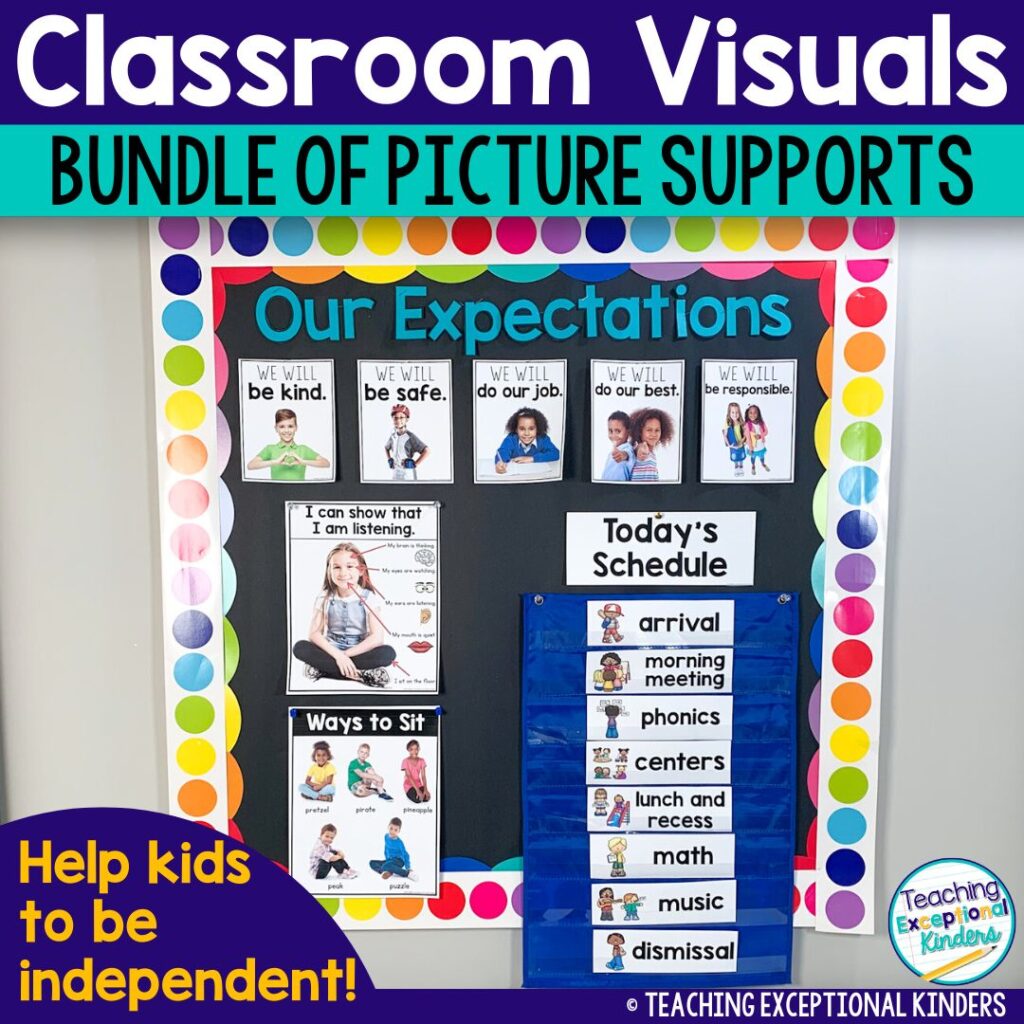
More Tips for Supporting English Language Learners
Be sure to check out this video for even more tips to help you best support the English learners in your classroom.
Save These Tips for Supporting English Learners
Be sure to save this post if you’d like to come back to it later! Just add the pin below to your favorite teaching board on Pinterest. You’ll be able to quickly find these tips and resources when you have English Language Learners in your classroom who need your support.
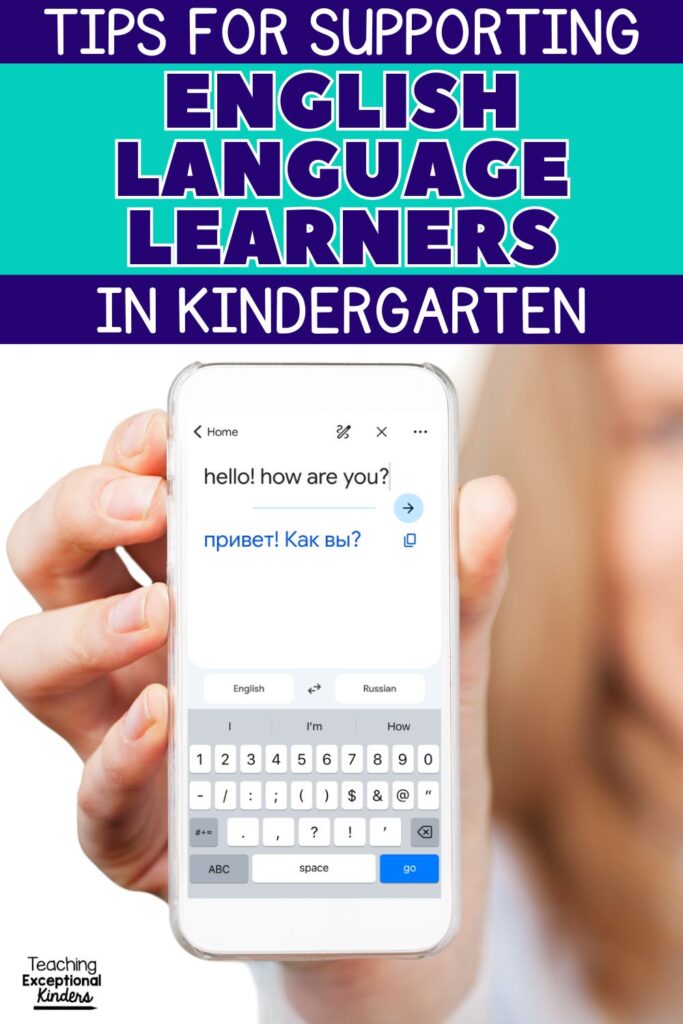
Amy
SITE DESIGN BY LAINE SUTHERLAND DESIGNS

